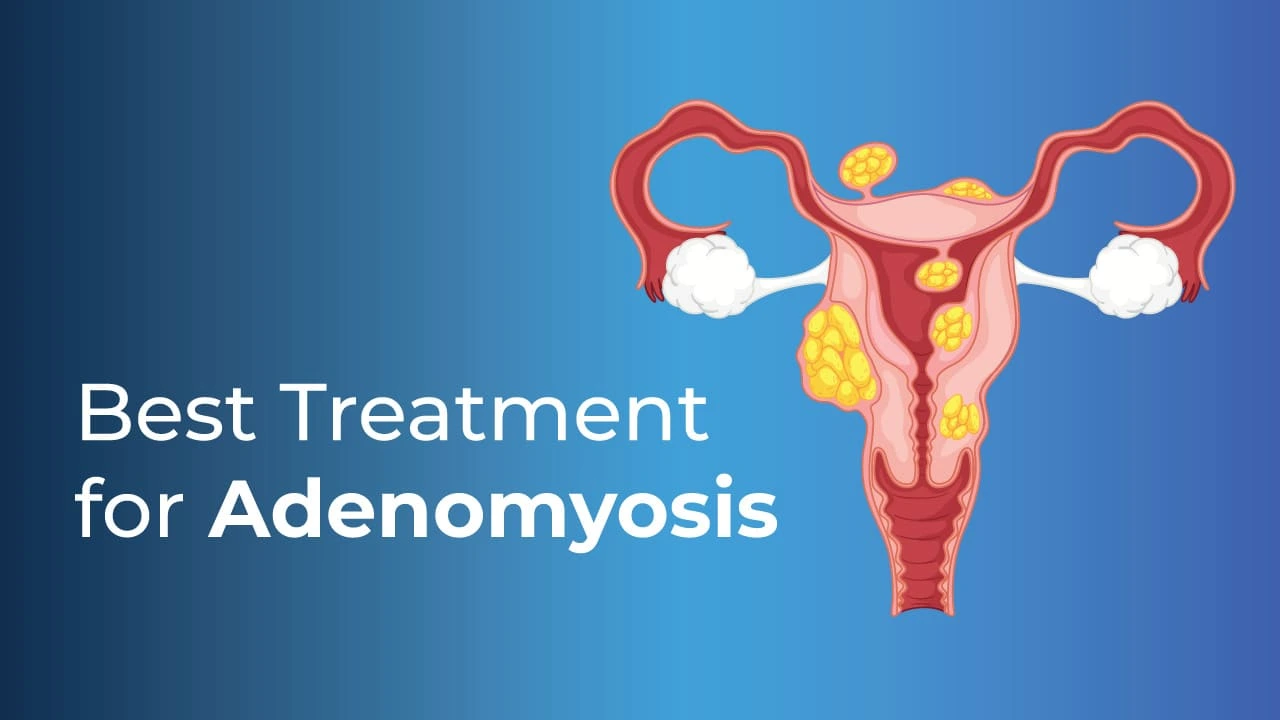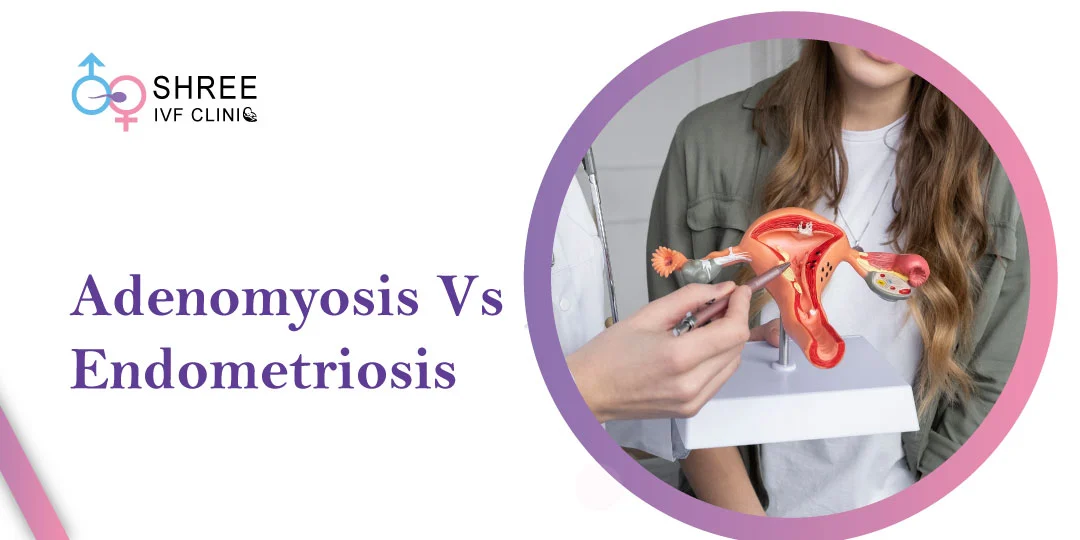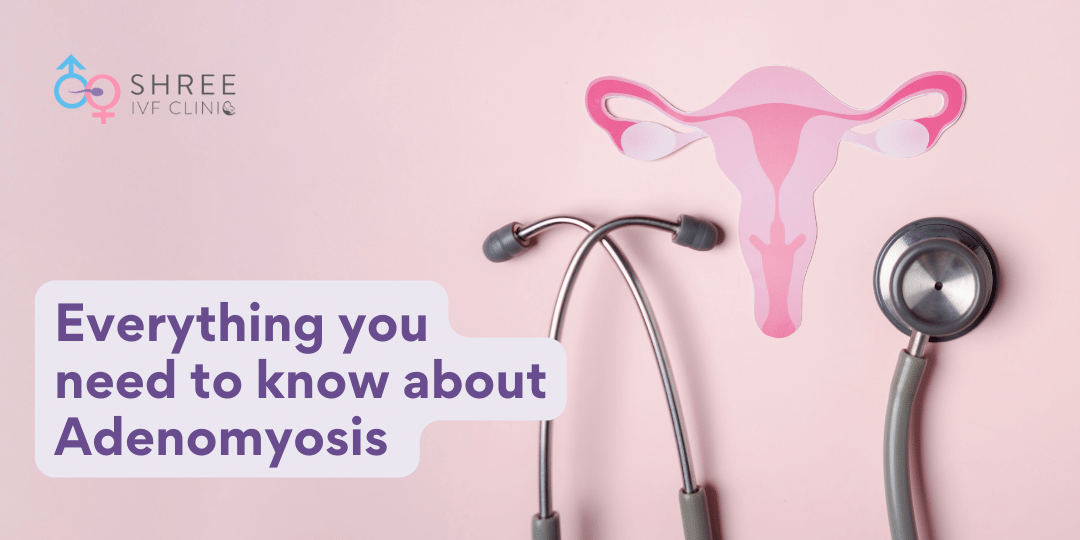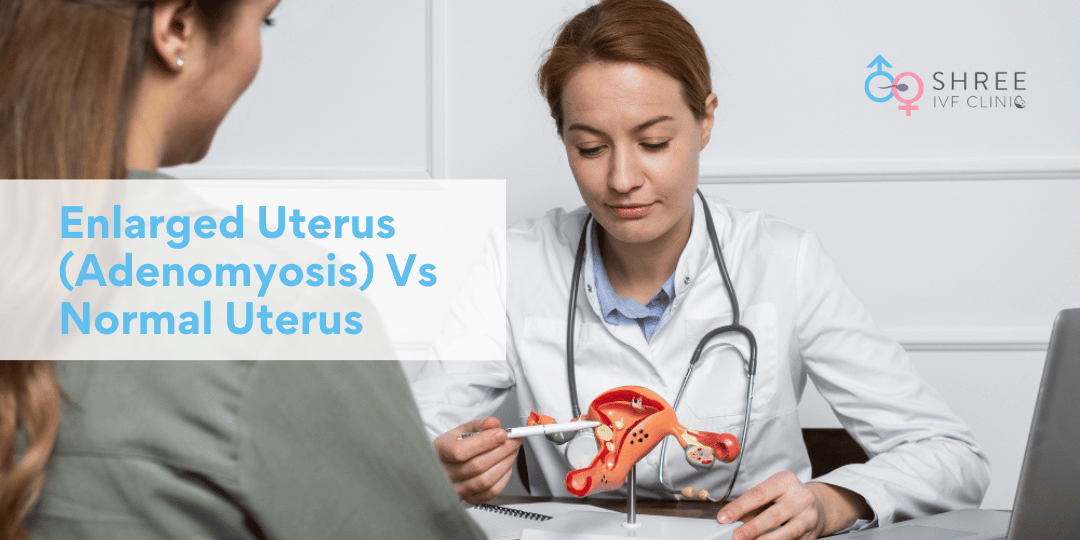What Is the Best Treatment for Adenomyosis?
UPDATED ON 1 JUN. 2022
Adenomyosis is difficult to diagnose since certain other uterine disorders have signs and symptoms similar to adenomyosis. Fibroid tumors (leiomyomas), uterine cells that develop outside the uterus (endometriosis), and uterine lining (endometrial polyps) growths are all examples of these disorders.
Only after checking out other potential explanations for your signs and symptoms can your doctor determine that you have adenomyosis.
Your doctor may take a sample of uterine tissue for testing (endometrial biopsy) to ensure you don’t have a more severe problem. An endometrial biopsy, on the other hand, will not assist your doctor in confirming adenomyosis.
Adenomyosis may be detected using imaging techniques such as ultrasound and MRI, but the only way to be sure is to check the uterus after a hysterectomy.

AUTHOR
Dr Jay Mehta
Scientific Director & IVF Specialist with 10+ years of experience
TREATMENT
CONDITION
GET IN TOUCH ON
What is Adenomyosis?
The female reproductive system may be affected by a disorder known as adenomyosis. This results in the uterus being larger and more robust.
The inner surface of the uterine wall (endometrium) is covered with endometrial tissue. When this tissue spreads into the myometrium, often known as the outer muscular walls of the uterus, adenomyosis may develop.
In addition, this additional tissue may cause the uterus to grow to twice or even three times its usual size, resulting in painful periods and irregular uterine bleeding.
The Impact of Adenomyosis on Women’s Fertility
Endometrial tissue (called the endometrium) lines a woman’s uterus. When she develops adenomyosis, her endometrium grows in the incorrect location — into the muscular layer of the uterine wall (called the myometrium).
As a result, heavy menstrual flow (often with blood clots called menorrhagia), pelvic discomfort, painful menstruation and severe menstrual cramps (called dysmenorrhea), painful intercourse, and vaginal bleeding between menstrual cycles are all symptoms of unusual growth.
In addition, an abnormal growth termed an adenomyoma may form in the uterus due to the disorder. Despite this, some women have minor symptoms such as discomfort or bloating in the pelvic area, while up to 35% of those afflicted seem to have no symptoms.
Women who have had at least one child are more likely to develop adenomyosis. However, the disease may make it challenging to conceive or have another kid for the first time. Treatments for infertility may be beneficial. When you’re pregnant, you’re more likely to develop:
- Miscarriage (pregnancy loss that occurs before the baby has completely developed).
- Premature labor (the baby is born before the 37th week of pregnancy).
Can Adenomyosis Be Cured?
A hysterectomy, in which the uterus is entirely removed, is the only treatment that can be considered an effective cure for adenomyosis.
What is the best treatment for Adenomyosis?
Because adenomyosis symptoms often disappear around menopause, the therapy you get may be determined by how near you reach that stage of life.
The following are some of the potential treatments for adenomyosis:
Anti-inflammatory medicines:
To manage the pain, your physician may suggest using anti-inflammatory drugs like ibuprofen. You may lessen the amount of menstrual blood flow and assist in alleviating discomfort by taking an anti-inflammatory drug one to two days before the start of your period and continuing to take it while you are having your period.
Hormone medicines:
Hormone-containing patches or vaginal rings, combined estrogen and progestin birth control tablets, or vaginal rings might alleviate the significant bleeding and discomfort associated with adenomyosis.
Amenorrhea, or the lack of menstrual cycles, is a common side effect of progestin-only birth control methods such as intrauterine devices and continuous-use birth control tablets. This side effect, which may bring some relief, is called amenorrhea.
Hysterectomy:
If you are experiencing significant discomfort and none of the previous therapies have helped, your doctor may recommend that you surgically remove your uterus. It is not required to have your ovaries removed to manage your adenomyosis.
How can UAE (Uterine Artery Embolization) help Adenomyosis?
Uterine Artery Embolization (UAE) is the most successful, uterus-sparing, and least invasive treatment option for adenomyosis. It is an outpatient operation that only takes one day to complete. It is carried out by an interventional radiologist (IR) with extensive training and expertise in blood vessel imaging.
To do the surgery, a very little cut must be made either in the wrist or the groin. Next, a tiny catheter is inserted into the blood vessels that feed blood to the fibroid via the incision, which is done with imaging technology. After that, a tiny number of particles, known as microspheres, are introduced into the artery.
These microspheres clog the targeted arteries, cutting off the blood supply to the fibroid. After that, the fibroids will get smaller in size. As a result, there has been a significant reduction in the size of the fibroids, as well as improvements in the severity of symptoms such as bleeding pressure and discomfort.
After the adenomyosis has been successfully embolized, the guide wire and catheter are withdrawn, and a band-aid is applied to the point of entry at the top of the patient’s right leg.
There is no need for sutures; all that is necessary is a little band-aid. After staying in the recovery room for up to four hours, the patient is sent home to continue their rehabilitation. Normal recovery time at home ranges from three to seven days, and most patients can return to work well before the seventh-day mark.

4,790+
379K+
” Every individual and couple’s journey is unique, and
finding the right solutions tailored to their specific
circumstances can make all the difference “
Shree IVF Clinic’s unique approach to treating Adenomyosis
Shree IVF Clinic is a high-end Mumbai facility specializing in advanced assisted reproduction and advanced pelvic surgery. The clinic is one of Mumbai’s busiest IVF clinics and is frequently regarded as one of the city’s Top Fertility Clinics by patients and other gynecologists.
The Clinic is committed to providing its patients with the best possible quality of medical treatment and advancements in the field of medicine. To provide comprehensive medical treatment under one roof, we have access to all modern facilities and the most cutting-edge medical technology.
Shree IVF Clinic’s team of gynecologists in Mumbai is experienced in treating various endometriosis cases. In addition, many patients have had adenomyosis surgery while the team was in charge.
AUTHOR
Dr Jay Mehta
Scientific Director & IVF Specialist with 10+ years of experience
CONDITION
CALL US 24/7 FOR ANY HELP
GET IN TOUCH ON
Share Article on
Recommended Reading
Difference Between Adenomyosis and Endometriosis
Endometriosis causes tissue to grow outside the uterus, while adenomyosis leads to growth within the uterine muscle
What Causes Adenomyosis? Guide to Causes, Diagnosis & Treatments Available
Demystifing Adenomyosis, providing an in-depth overview of its causes, diagnosis, and treatment options through this article. learn more.
Understanding Enlarged Uterus vs Normal Uterus
This article helps you understand the difference between an enlarged uterus vs normal normal-sized along with its signs & symptoms




